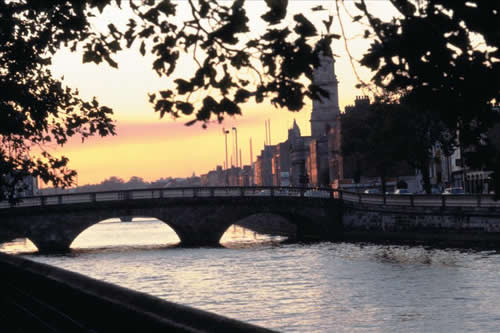Viking Ship Museum: We are forced to give Sea Stallion away

In relation to a new EU-directive about the inviolability of the national cultural heritage Ireland has claimed the handing over of the Skuldelev 2-wreck, the remains of a 30m-long Viking ship, which today is on display in the Viking Ship Museum Roskilde. The background for this claim is the fact that Skuldelev 2 originally was built in the year 1042... in Ireland. About 30 years later the ship sailed to Denmark and ended her days on the bottom of the Roskilde Fjord as part of a fortification against enemies traveling on the water.
"We are still shocked. The claim from Ireland came by a huge surprise for us. This looks like a revenge with a delay of 1,000 years," says the director of the Viking Ship Museum, Tinna Damgård-Sørensen.
"Since the Skuldelev-ships were excavated in the 1960ies we have regarded them as precious stones of the Danish cultural heritage. But for Skuldelev 2 it is scientifically documented that she was built in the vicinity of Dublin. The new EU-directive, which comes into force on April 1st this year, gives the Irish the lawful authority to claim the wreck be handed over to its legitimate owner, this being the Irish Ministry for Culture".
"We asked the European court of justice whether the fact that the ship was built by Vikings resident in Ireland would not turn the matter around. So to speak: the ship was built in Ireland but by people who had Nordic blood in their veins. But the EU-court turned down our complaint on the grounds that the oak timber the ship was built of came from the woods around Dublin and therefore is regarded as Irish timber. And the timber's origin definitely plays a more important role than the nationality of the craftsmen," continues Tinna
Damgård-Sørensen, who has kept the Irish claim a secret until now.
"We have also raised an objection against EU laws being valid for a ship that was built in 1042 - circa 900 years before the Rome declaration was written. This argument made no better impression on the judges of the EU-court than the others. In the end we raised the issue that the ship was excavated in the 1960ies when Denmark was not even a member of the EU (or EC, how it was called then). But the European court of justice holds to the directive being made retrospective... back to the Viking Age if need be".
There are good reasons though, that the Viking Ship Museum may keep the wreck Skuldelev 2. The pieces of the wreck are so delicate that they would not survive a transport from Roskilde to Ireland. After long and secret negotiations between the National Museum in Dublin and the Viking Ship Museum both partners have now reached an agreement.
When Sea Stallion from Glendalough, which is a true copy of Skuldelev
2, sails on her historic voyage from Roskilde to Dublin this summer, the crew will hand over the ship to the Irish authorities at arrival in Dublin in mid August.
"One has to admit, that the project suddenly took a different direction than what was planned. During 10 years we have dreamed about and made plans for Sea Stallion to sail to Dublin... and back again. Now the result is that we only need to sail to Dublin. There we will give her to the Irish and in return the original wreck can stay in Roskilde.
According to the National Museum in Dublin, Sea Stallion will be taken out of the water by Irelands biggest crane in the middle of August and from then on be on show at Collins
Barracks, former military barracks and today part of the National Museum.
"The very day that was supposed to be a day of celebration - Sunday 1st July - has become a day of sorrow for we have to say good bye to Sea Stallion forever. It is a hard stroke for the Viking Ship Museum, but also a great loss for Roskilde, and for the whole of Denmark. Roskilde looses a symbol - it is like Roskilde Cathedral would burn down.
And Denmark has to depart from the world's biggest reconstruction of a Viking ship, only one year after it became part of our ultimate cultural heritage in the so-called Cultural Canon".
As Tinna Damgård-Sørensen says, the Viking Ship Museum is not going to admit to the will of the Irish for nothing. The National Museum in Dublin displays a number of axes and jewellery from the Viking Age, which the Viking Ship Museum now will claim to come back to Denmark. A recent ship find has also aroused the Viking Ship Museum's attention.
"This wreck is probably not from the Viking period but from the Middle Ages. But it is clinker-built, a building method that originates from the Vikings. In our opinion this fact alone is sufficient to claim the ship back to Denmark as part of our cultural heritage, according to the EU directive," finishes Tinna Damgård-Sørensen.
By: Henrik Kastoft